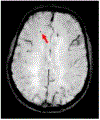Current and Emerging Techniques in Neuroimaging of Sport-Related Concussion
- PMID: 36930218
- PMCID: PMC10329721
- DOI: 10.1097/WNP.0000000000000864
Current and Emerging Techniques in Neuroimaging of Sport-Related Concussion
Abstract
Sport-related concussion (SRC) affects an estimated 1.6 to 3.8 million Americans each year. Sport-related concussion results from biomechanical forces to the head or neck that lead to a broad range of neurologic symptoms and impaired cognitive function. Although most individuals recover within weeks, some develop chronic symptoms. The heterogeneity of both the clinical presentation and the underlying brain injury profile make SRC a challenging condition. Adding to this challenge, there is also a lack of objective and reliable biomarkers to support diagnosis, to inform clinical decision making, and to monitor recovery after SRC. In this review, the authors provide an overview of advanced neuroimaging techniques that provide the sensitivity needed to capture subtle changes in brain structure, metabolism, function, and perfusion after SRC. This is followed by a discussion of emerging neuroimaging techniques, as well as current efforts of international research consortia committed to the study of SRC. Finally, the authors emphasize the need for advanced multimodal neuroimaging to develop objective biomarkers that will inform targeted treatment strategies after SRC.
Copyright © 2023 by the American Clinical Neurophysiology Society.
Conflict of interest statement
The authors have no conflicts of interest to disclose.
Figures





References
-
- Langlois JA, Rutland-Brown W, Wald MM. The epidemiology and impact of traumatic brain injury: a brief overview. J Head Trauma Rehabil. 2006;21(5):375–8. Epub 2006/09/20. - PubMed
-
- Laker SR. Sports-Related Concussion. Current pain and headache reports. 2015;19(8):41. Epub 2015/07/01. - PubMed
-
- McCrory P, Feddermann-Demont N, Dvorak J, et al. What is the definition of sports-related concussion: a systematic review. Br J Sports Med. 2017;51(11):877–887. Epub 2017/11/04. - PubMed
-
- McClincy MP, Lovell MR, Pardini J, Collins MW, Spore MK. Recovery from sports concussion in high school and collegiate athletes. Brain Inj. 2006;20(1):33–9. Epub 2006/01/13. - PubMed
Publication types
MeSH terms
Substances
Grants and funding
LinkOut - more resources
Full Text Sources
Medical
Miscellaneous

